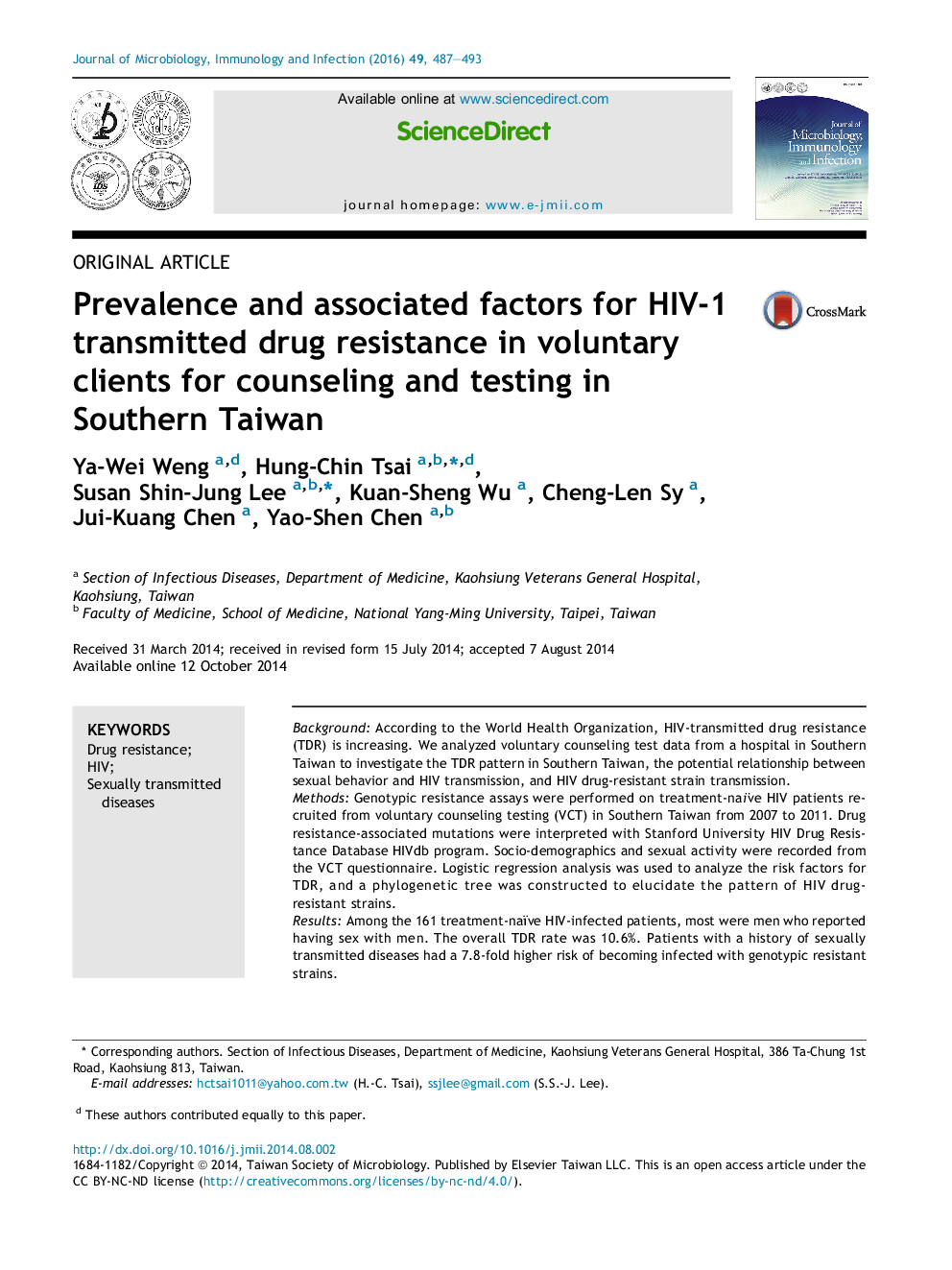| کد مقاله | کد نشریه | سال انتشار | مقاله انگلیسی | نسخه تمام متن |
|---|---|---|---|---|
| 3377669 | 1407938 | 2016 | 7 صفحه PDF | دانلود رایگان |

BackgroundAccording to the World Health Organization, HIV-transmitted drug resistance (TDR) is increasing. We analyzed voluntary counseling test data from a hospital in Southern Taiwan to investigate the TDR pattern in Southern Taiwan, the potential relationship between sexual behavior and HIV transmission, and HIV drug-resistant strain transmission.MethodsGenotypic resistance assays were performed on treatment-naïve HIV patients recruited from voluntary counseling testing (VCT) in Southern Taiwan from 2007 to 2011. Drug resistance-associated mutations were interpreted with Stanford University HIV Drug Resistance Database HIVdb program. Socio-demographics and sexual activity were recorded from the VCT questionnaire. Logistic regression analysis was used to analyze the risk factors for TDR, and a phylogenetic tree was constructed to elucidate the pattern of HIV drug-resistant strains.ResultsAmong the 161 treatment-naïve HIV-infected patients, most were men who reported having sex with men. The overall TDR rate was 10.6%. Patients with a history of sexually transmitted diseases had a 7.8-fold higher risk of becoming infected with genotypic resistant strains.ConclusionIn Southern Taiwan, the HIV TDR rate was 10.6% among those receiving VCT. Our findings suggest that sexual behavior may play an important role in HIV drug-resistant strain transmission.
Journal: Journal of Microbiology, Immunology and Infection - Volume 49, Issue 4, August 2016, Pages 487–493